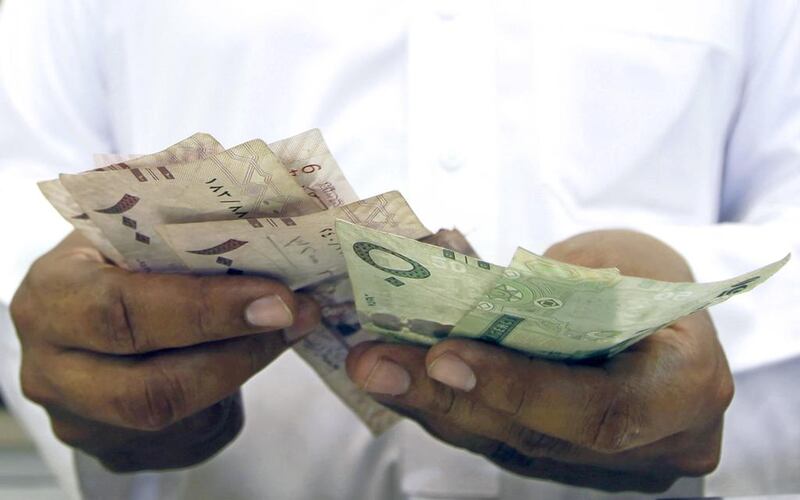Moody’s says it may downgrade Saudi Arabia’s banks, as public spending cuts and low oil prices lead to rising loan defaults.
It follows a mass downgrade of Saudi banks and a cut in the country’s sovereign rating by rival ratings agency Standard & Poor’s.
“We expect the operating environment for Saudi banks to weaken over the next 12 to 18 months,” said Olivier Panis, who covers Gulf banks for Moody’s.
“With the prospect of lower oil prices for longer and a 14 per cent reduction in public spending in 2016, we believe that the credit risks across the system are rising.”
Non-performing loans will grow to 2.5 per cent of all loans, up from 1.4 per cent, Moody’s says. Loss provisioning and the cost of capital will both increase but capital buffers and profitability should remain strong, Mr Panis said, because of the absence of corporate taxation and a stock of bad loans smaller than those in other Gulf states.
“We expect the local impact to be manageable and funding structures to remain relatively stable thanks to a broad and growing depositor base,” Mr Panis said.
Sanyalaksna Manibhandu, the head of equities research at National Bank of Abu Dhabi, said: “You’re looking at a vicious spiral downwards … and banks are going to have to raise some more medium-term long-term funding as long as crude prices stay as they are.
“The government is cutting spending and the public sector will continue to deposit less money in the system, so that means liquidity will tighten and at individual banks advances-to-deposits ratios will go up, meaning that they’re constrained from lending.”
Domestic credit in Saudi Arabia will grow this year by 8.9 per cent year-on-year, Credit Suisse expects, down from 11.6 per cent last year. Credit to the private sector will grow by 6.1 per cent this year and next, the bank forecasts.
Moody’s recently placed Saudi Arabia’s sovereign credit on its 12-country watch list for a possible downgrade within the next two months after revising its expectation for this year’s oil price down to $33 per barrel, from $43 per barrel. The lower oil price will make it harder for debtors to repay their loans, while hitting government revenues, Moody’s said.
“The structural shock to the oil market is weakening Saudi Arabia’s government balance sheet, its economy and therefore also its credit profile,” Moody’s said this month.
Analysts cut their growth forecasts for the Saudi economy after the oil price scraped new lows at the beginning of this year. Moody’s expects growth this year of 1.5 per cent of GDP, compared with 3.4 per cent of GDP last year.
The growth of the country’s non-oil economy will slow to 2.2 per cent this year, says Credit Suisse, down from an average of 5.7 per cent year-on-year growth over the last five years. The country has invested in developing its minerals and petrochemical exports industries, the IMF says, but both have suffered amid a global commodities rout.
Real fixed investment – a measure of government diversification efforts – is set to fall by 2.8 per cent year-on-year next year, the bank estimates, further hurting growth.
abouyamourn@thenational.ae
Follow The National's Business section on Twitter





